
If I had to name one tying material that rivaled the versatility and universal fish-catching properties of the venerable peacock herl, it might be Jaimeson’s Shetland Spindrift Yarn. And lately, I’ve been tying the majority of my “working” flies with it. Why?
- It’s fast and easy to tie with. Just a few wraps of yarn are enough to create a full body without the effort of dubbing or endless thread wraps.
- Shetland Spindrift yarn comes in a wide range of colors that are variegated. The multi-colored variegation creates the illusion of complexity which I believe is a predatory trigger in trout. In addition, the diverse palette of colors in each yarn broadens your chances in matching whichever color the fish might be keen on under the present conditions.
- It’s scraggly, translucent, and just generally “buggy” looking.
- Unlike peacock herl, it’s intrinsically durable and does not require an extra step to reinforce with thread or wire.
- It’s inexpensive. One 113-yard roll will likely be a lifetime supply for the average angler and only costs a few dollars.
- It absorbs water to help the fly sink, but retains enough buoyancy to facilitate depth control.
- The 2-ply thickness of Jaimeson’s yarn is perfect for fly tying. It’s not so thick that it needs to be separated like other yarns and if more bulk is needed, it can either be doubled over itself or doubled wrapped.

There are two main fly types I’ve been using the yarn for. One is the Shetland Killer and the other is the simple stiff hackle kebari I’m about to share with you. This is probably one of the fastest and easiest flies to tie, yet has proven itself to be one of the most effective. In fact, it flies in the face of the conventional wisdom that the more painstakingly tied and realistic a fly is, the more effective it is.
There are only three ingredients in this fly: yarn, hackle, and your creativity. I don’t count thread or the hook as “ingredients”. In fact, I find it strange that most people do, while failing to list the most important ingredient of all in any fly pattern: one’s own imagination. I’ve let mine run wild, tying stiff hackles with all sorts of different colors, but I’ll share a few of my favorites with you and show you how easy they are to tie.

How to Tie the Shetland Futsū
I can tie this fly in 2 minutes and the cost of materials is next to nothing. The most expensive part is the hook which is about 5 cents. This means I can fish it in snag-ridden precarious lies without worrying about losing it and reach the fish others might shy away from for fear of losing their $3.50 fly.
Hook: Firehole Sticks 633 #12 or #14
Thread: Uni 6/0
Body: Shetland Spindrift Yarn (color according to your whim)
Hackle: Dry to match hook size or one size smaller, grizzly
Step 1
In this example, I’m using “Autumn” colored yarn. Start the thread and tie in the yarn along the hook shank. Advance the thread to about 1/3 shank length behind the eye.

Step 2
Tie in the hackle with the curve (dull side) facing forward as you would if you were tying a dry fly. Advance the thread to just behind the eye.
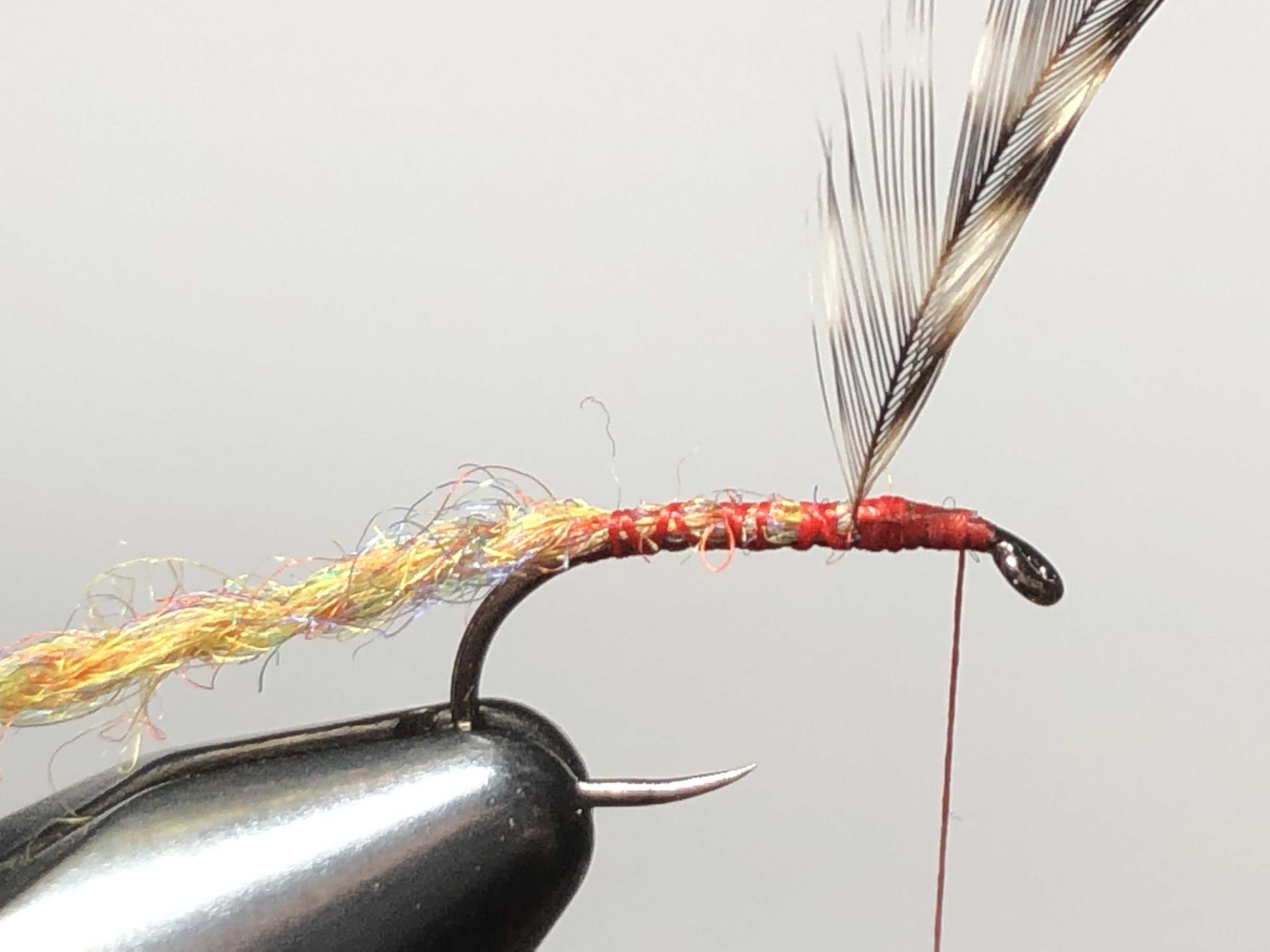
Step 3
Wrap the yarn for the body and one or two turns past where you tied in the hackle, secure it, and trim off.
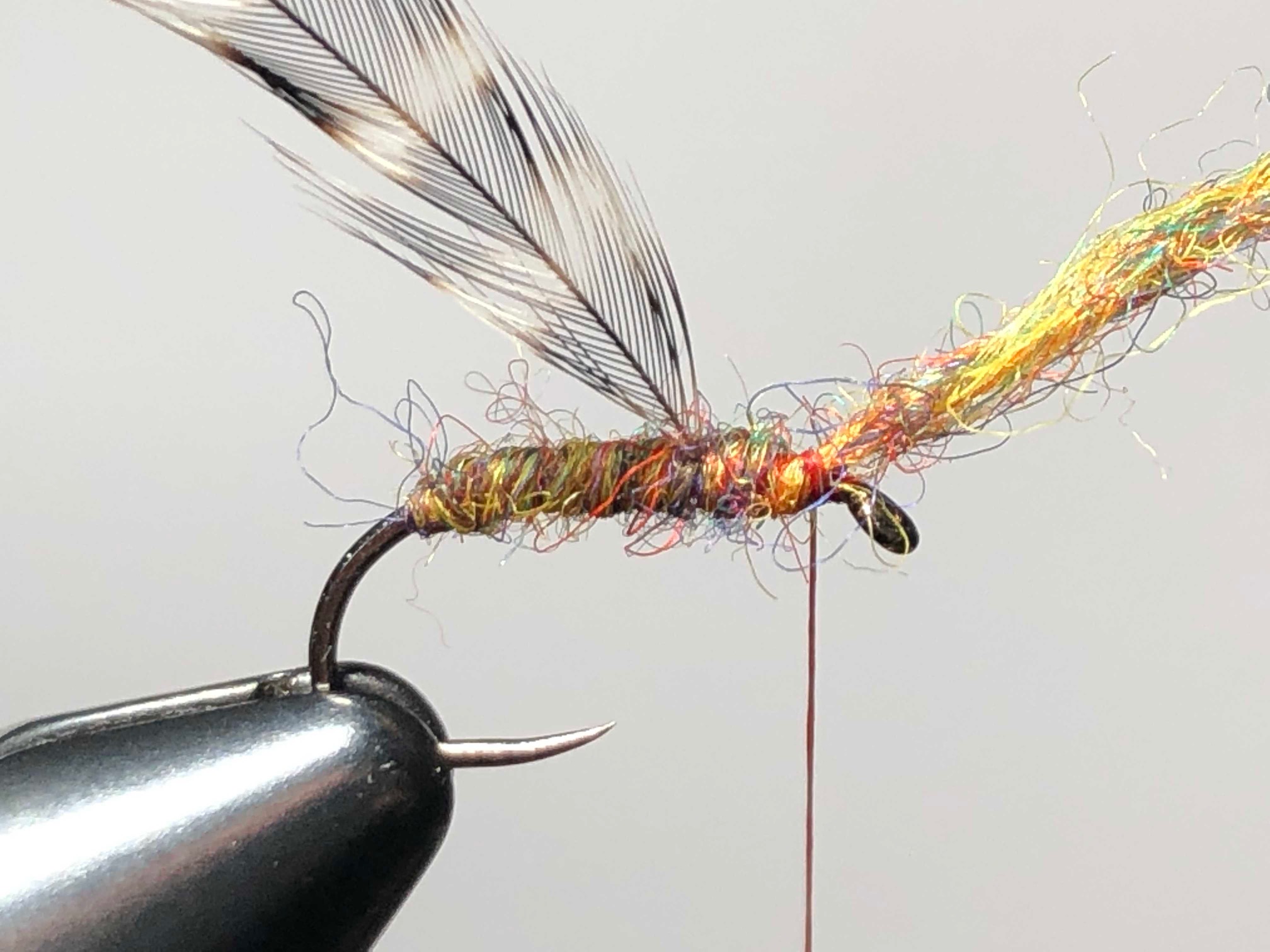
Step 4
Palmer the hackle toward the hook eye. I usually make about four wraps. Secure and trim.

Step 5
Whip finish or half hitch the head and trim the thread.

Color Choices
Shetland Spindrift is available in over 200 colors so you’ve got a nearly limitless palate to explore and experiment with. Here are some of the colors I have found to be most effective …
Paprika
This has proven to be the most effective color for me. Fish see the color red the best and that probably accounts for it.
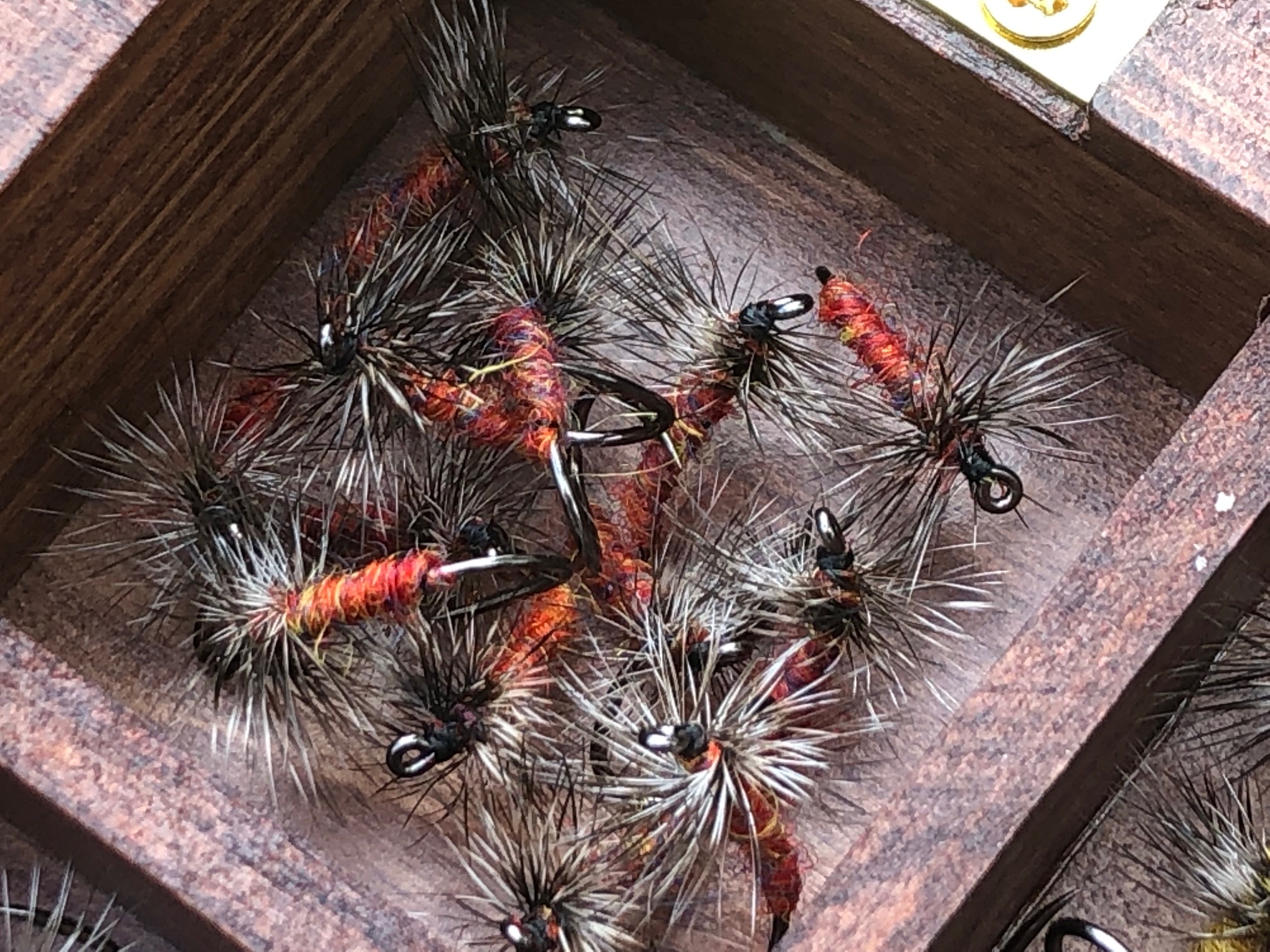
Wren
A good, drab all-purpose color.

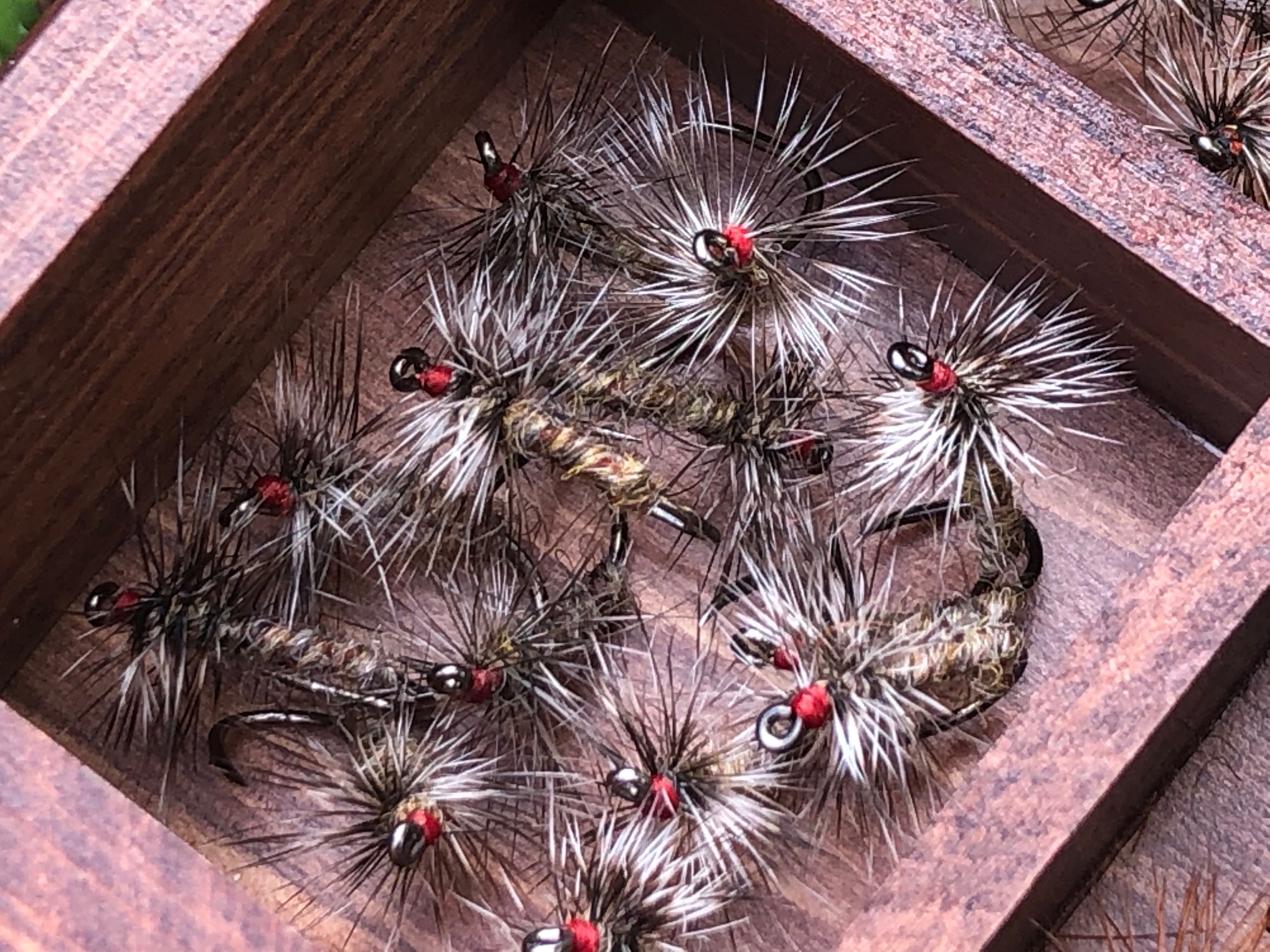
Shaela Moorit
A great dark pattern a la the Ishigaki Kebari.


Burnt Ochre
A lighter-colored compliment to the Shaela Moorit pattern.


From bottom to top:
Autumn, Leprechaun, Burnt Umber …
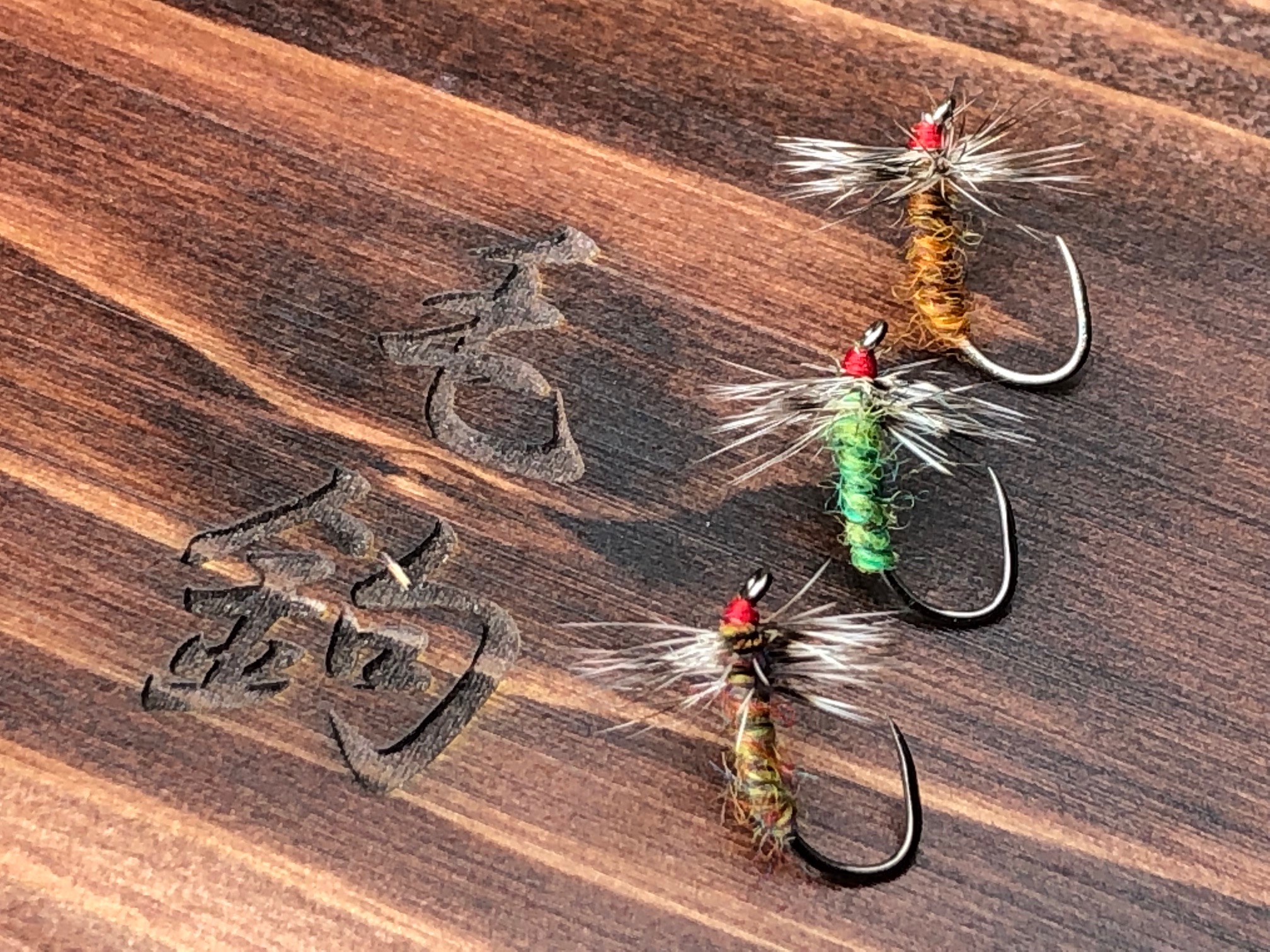
If I showed some of my friends in the conventional fly fishing world these flies, they’d either think I had no clue how to tie or was playing belated April Fool’s joke on them. Hardly would they believe that these simple ties will catch just as well as their over-engineered and self-aggrandizing “showroom” patterns.

Of course, yarn bodies also lend themselves to soft-hackle sakasa kebari or other patterns. I just wanted to expose the virtues of Shetland Spindrift as a material and let you decide how to take advantage of it.
I get my yarn from The Websters, but there are many online and local dealers.
For all the reasons above, these are my go-to workhorse flies and are permanent residents in my fly box. And being so easy to tie, they’re also perfect if you’re thinking of getting into fly tying!
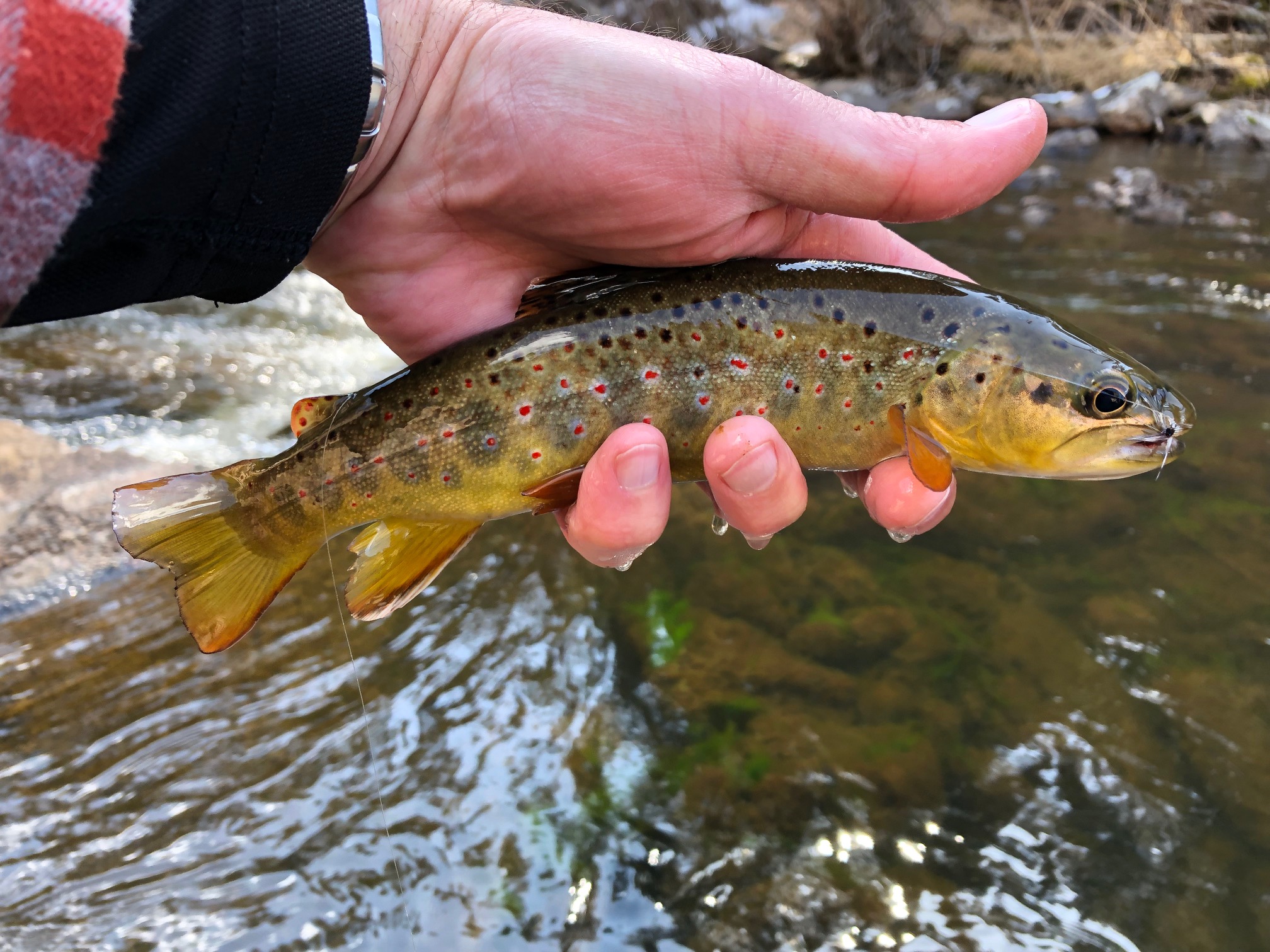









Man Jason, I’ve never been a yarn guy (always liked herl bodies), but your last two posts are going to get me ordering up some yarn asap… Great stuff!
ha! the secret’s out. My wife clued me onto that stuff years ago … and i’m not looking back. I keep them in my battery box on my motorcycle … and never show them in publc for fear of losing what little respect i have left in old age (8->}
You may find the attached photos of interest as I have photographed the Jamieson’s Shetland Spindrift wool card showing examples of all the different colours available with their names and colour number.
I hope this is acceptable to you.
Thanks for that David! I swear … every color they make gives me an idea for a fly. I saw some of those when I was buying mine but tried to restrain myself from buying $200 worth of yarn. But I’ll probably add a few more to my collection like the Natural White and the Mogit. Amazing stuff.
Jamieson’s Shetland Spindrift wool colours
Some more
Shetland Spindrift wool
More colours
Jamieson’s Shetland Spindrift wool
More colours
Jamieson’s Shetland Spindrift wool
More colours.
Hi Jason. David Riley certainly made an outstanding contribution to this post – Many Thanks David! Jason you have got me to thinking, and that’s always a dangerous situation. I do not know if I am quite ready to entirely abandon Peacock Herl just yet, but using wool yarn is a heck of a lot faster and easier than making Peacock Herl Ropes out of tying thread, peacock herl with the aid of a Dubbing Hook. And the yarn would easily work just as well in many situations, and be much more translucent on my Foam Spider and Two-Toned Foam Beetle and X-Rated Ant Fly Patterns than the peacock herl is. I do not know whether I should thank or curse you for giving me a whole new series of fly patterns to tie and test this year. Now, I am looking forward to the opening of trout season at the end of this month more than ever. Thank you Jason….Karl.
I am scheduled to lead our weekly fly tying group a couple weeks in May and like this article and the ideas. It made me wonder how a piece of foam attached under the yarn would float if you wanted something buggy but closer to the top. I’ll give it a try when I get my taxes done and let you know!
As for the multi-colored variegation of the Shetland Spindrift Wool Yarn triggering predatory trout, scroll down through this article the following link is for and view the pictures of all the mayfly nymphs, and you will see the hopelessness of trying to tie any kind of realistic mayfly nymph patterns. The yarn, with its random variegation and mix of fibers does a much better job than the best intentional imitative tiers can do. Here is the link: https://www.naturebob.com/sites/default/files/Mayflies%20by%20John%20Hudson,%20Katherine%20Hocker,%20Robert%20H.%20Armstrong.pdf
As for Keira’s question: Try tying in easy to see closed cell foam (for angler visibility) as a shell-back, with the yarn making up an under-body wrapped in under the shell-back before it is pulled over and tied down. I tie a High Country Hopper Pattern with no legs and a black yarn under-body that the trout really go for. Give this tying technique a try and see what you think.
Karl, agree with you 100% on the variegation. And the exact pattern or order doesn’t matter—just creating the impression of complexity is enough.
I counted 46 NEW colors for this year alone to add to the existing 142 colors they list. You can view the entire list here…..http://www.simplyshetland.net/Jamieson-Spindrift.html . This could keep anyone busy for a long time.
I love using this stuff for flies. First heard about it for UKB. Very easy to work with and lots and lots of great colors. You can get a nice segmented looking body. I started using it for kebari as well and love it. I didn’t come from a western fly fishing tradition so don’t have a lot of experience tying flies. The simplicity of Japanese kebari was one of the things that attracted me to tenkara. This yarn makes tying them even easier but the texture gives it even more character. I have a two year old and another on the way. My fly tying time is limited. I can turn out a bunch of these real quick and they seem to work better that most of the old standards. Sometimes I don’t want the segmented look so I rough the finished fly up with a small wire brush I keep in my kit. It goes from looking like some sort of larva to looking like a fuzzy caterpillar. Occasionally when tying UKB’s I will lay a base of pink glow brite under the Oyster color yarn. When it is wet it looks like a piece of raw hamburger going down the stream. The only problem I run into is being paralyzed by too much choice with all the color options.
Cool post as always. How about tying up some Sekasa Kebari for next time.
Got to get some of those.
Because of Peacock Herl’s and Sword’s iridescent qualities, I suppose, there is a fairly common misconception going around out there among anglers that peacock herl’s well known fish catching abilities are due to its supposed ability to reflect Ultra-Violet Light, which cannot be farther from the actual truth of this matter than it is. To verify the above statement, please take a look at this: https://www.dailymail.co.uk/sciencetech/article-2168268/Incredible-photos-peacock-sees-looks-potential-mate–dog-sees-throw-ball.html As you can plainly see, nearly all peacock feathers are highly UV-Light absorbing materials.
At present I have 7 colors of Jamieson’s Shetland Spindrift Wool Yarn – Oyster, Autumn, Mist, Bracken, Purple Hazs, Rye and Shetland Black, and all of them are just as dull under Black Light illumination as peacock herl is. Why is this fact important to fish and fishermen? Because under certain conditions the primary indirect light by which fish find their food falls into the UV-spectrum of a background space-light glow in which food forms that absorb UV-Light show up quite readily as silhouettes the fish find it exceedingly easy to see and take in dimly lit feeding situations. All water absorbs light, so it gets dark down there and with horizontal distance very quickly – in clear water, 22% of the light is lost in the first 1/2 inch, in 3 feet 45% of the light is absorbed by the water, at 33 feet 78% of the light has been absorbed whether it is in depth or a straight line distance at the same depth,
And while there are specific UV-Sensitive Cone Cells that some (but not all) fish have to see color and details with in well lit situations, the Rod Cells, which can only can see black, white, and shades of gray and nearly no detail, are also highly UV-Light sensitive vision cells. UV-Light is a light source that humans do not have the ability to see. Like White Light – which is not a color in and of itself, UV-Light can excite longer visible Fluorescent color wave lengths that people can and do readily see.
So far, none of the of Jamison’s Yarns I have are Fluorescent materials. But that can be mitigated to some extent with under wraps of Glo-Brite Fluorescent Flosses and/or with the use of FL-Wire and FL-Material Ribbing. And one point that should be kept in mind is that the trout’s power of resolution (how tightly the cones and rods are packed together on their eye’s retinas) is only about 1/14th as close and in numbers as our rods and cones are packed on our retinas. So while trout can easily see colors and very small objects in bright light, they can’t see color at all or much detail at night, dawn and dusk. And even in the best of lighting conditions, the picture they get on their TV screens is quite crude compared to the pictures we see on our TV screens in our brains.
Hi Jason!
Longtime reader and fan of your blog. I have two questions- what color of grizzly do you have in your photos? I just ordered some dark red Shetland to try these flies, and wondering if the grizzly in your photos is the “normal” shade that I should base off trying to decide if I go lighter or darker. Second, have you ever experimented with wrapping wire/tinsel on yarn bodies? While I know it is an extra step, I am curious if an upturned eye and tinsel would increase the eye appeal of these to me even more- but, I didn’t want to add ribbing if anyone has had the experience that it interferes with the natural segmentation of the yarn.
Best,
Austin
Hi Austin, thanks for reading! Hope this answers your questions:
1. The grizzly I use is just natural grizzly Whiting 100s. Nothing special. But I will remark that the black barring seems to be darker closer to the butt of the feathers than toward the tips.
2. I don’t think an up-eye would really add anything to the aesthetics for the fish–only the tyer.
3. Of course you can wrap wire or tinsel! In fact, I think it would add the impression of even more defined segmentation and the flash (as we all know) can be a great trigger. Remember, the yard is really only segmented if you twist it. So if you didn’t twist it and then ribbed the wire, that would give it great segmentation. Try it and post some pics here on the blog of what you come up with. I’m sure others would like to see it.
Any chance of a video for this one? Thanks
Hey Mike, I’ll try to get one out but my video capabilities are pretty limited. If you’re ok with amateur video, I’ll do one.
Look what happens when you have some winter time on your hands… wow, Jason I love this article and into to using yarn…just order most of your colors… hey and the Websters are in my Oregon neighborhood…love that the yard simplifies the tying… started tying Tenkara flies about a year ago…loved it from the get go…as the steps are cut in half from Western flies tying efforts… now with yarns (and noticed your select yarns are “multi-colored” threads which gives them more complexity), can’t wait to get my order and disappear into my fly tying room… love the post…bookmarked for sure…
Brad
Scappoose, OR
Hi Brad! I’m excited that you’re excited! Would love if you could post some pics of your flies here when you’re done.
What color hackle did you use with the Shaela/Moorit yarn? Looks like a medium ginger, maybe?
Hi David, no, it’s just brown hackle.
Thanks Jason, I’ll see about getting some to add to my (new) collection.
Thanks Jason, I’ll get some to add to my (new) collection.
Darn you Jason Klass. I just read this article and proceeded to order 14 colors of Jamieson yarn. ? Thanks for the informative website throughout the years.
Jamison’s home page has better pics of the spindrift yarn colors. Each pic can be clicked on to goto each color’s own page for a larger view. https://www.jamiesonsofshetland.co.uk/spindrift-1-c.asp
Thanks for that tip Brian!
I love the looks of your cheap date. I am an avid bluegill fisherman. Wonder about your hook choice. Why the curved nympth type hooks?
Hi John thanks! It’s not a curved hook. It looks that way but it’s actually a straight-shank hook with a wide gap. Firehole Sticks #633
An here I was just getting good at dubbing!
I’ve had the jameisons oyster for a few years but just ordered some more colors. Time to buy more storage for my materials! Cheers.
Well the forward facing soft hackle sakasa kebari are fun. But I found your article I about stiff hackle futsu flies intriguing and highly appealing.
So I started with new 25 pack of size 12 Hends hooks, and just keeping tieing.
Tried different colours of Spindrift wool. Green (147 Moss), pale yellow (330 Daffodil), both using my usual traditional claret thread.
Then tied a bunch in Grave Digger colours (1270 Purple Haze)
Finally, I pulled out spool of thick cotton thread my mother gave me decades ago. (Now the fish can laugh at me because thread is JP Coats, not Pearsalls…LOL)
Fine way to spend couple hours when much of North America is getting hammered with terrible weather
Thank you for sharing your ideas, and for inspiring me to get creative again at my fly-tying bench
Hi Bob, those look great! Now, the question is … have you fished them yet?
I know this article is a couple of years old but I tried these this year and I really like them. I’ve been using Jaimeson’s Shetland Spindrift for a couple of years to make nymphs, mostly all some variation of Walt’s Worm and just changing colors (sometimes adding beadheads). I had also never tied or fished wet flies, or used Whiting 100s, and this article got me doing both – thank you.
I use them mostly in 2 colors: wren and amber, both with grizzly hackle, all on size 12 hooks. I still carry a small assortment of flies but these are a staple in my flybox.
To personalize it, to some I add a sparse overwing of 8-10 strands of cream antron and 4-6 strands of ginger antron. Doesn’t seem to make a difference, but I like how it looks with the wren body.
I even have a few tied/used as nymphs with copper bead. They become different tools then, but really are the same recipe, except starting with a bead. Evidently fish don’t know stiff hackle is supposed to be for dry flies…
Thanks for sharing the Shetland Futsu and all you do.
That’s great, Scott! Yes, the wren is the perfect general mayfly color. I have good luck with wren, paprika, and mirrydancer. The latter I tie with brown hackle instead of grizzly). Speaking of beads, you might want to try playing around with glass beads too. They’re great for futsu–just enough added weight to get you down, but not a cannonball like tungsten. I sell this one in my Etsy shop and it’s a killer: https://www.etsy.com/listing/1718453130/glass-bead-futsu-kebari-14-2-pack . The great thing about glass beads is that there are many more color options to experiment with. As if we needed another, right?
Hi Jason
Thanks for all your posts especially this one. Simple killer patterns using oyster and leprechaun have worked well for me in the UK.
Have you tied any dry flies with spindrift – I’m thinking of trying it?
Thanks Kerry! I haven’t tried it for dry flies just because it doesn’t float very well. It absorbs water, so if you use it on a dry fly, you might want to treat it with something like Thompson’s Water Seal or something. Or, use it sparingly and make sure you have enough hackle to support the wet wool. Let me know how you make out!